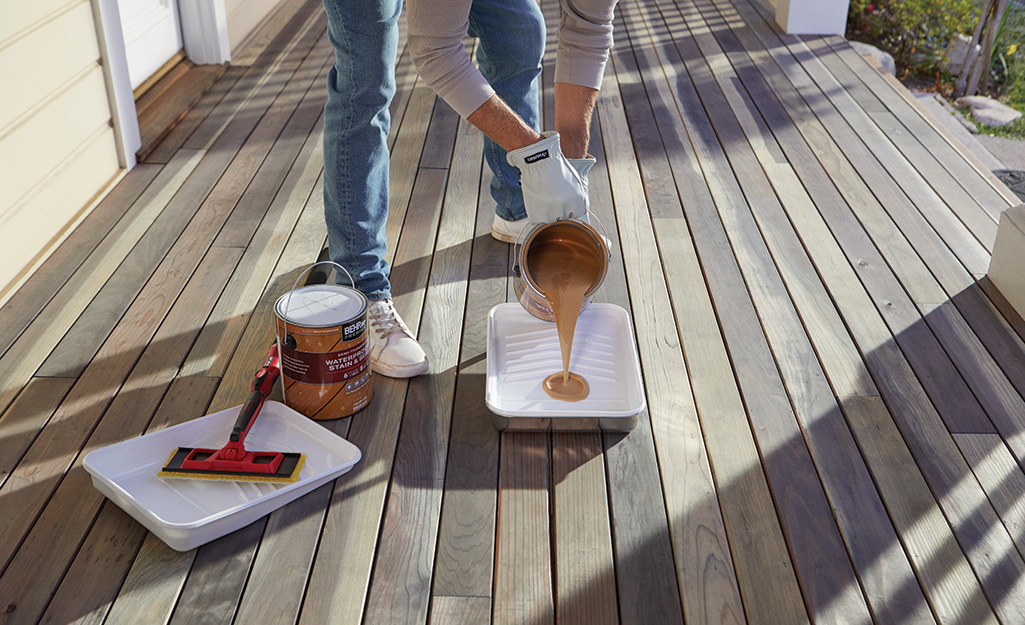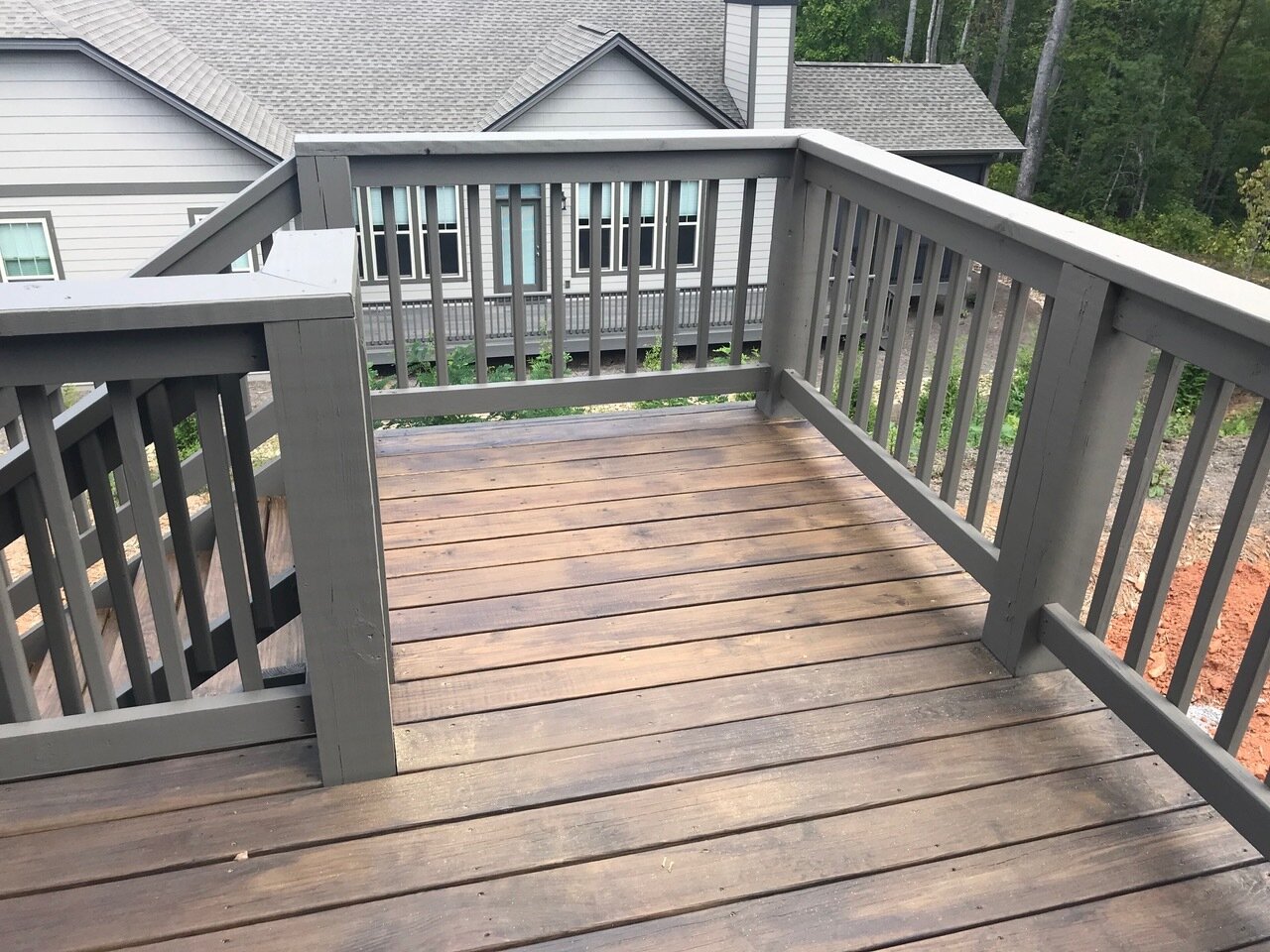Deck Staining Quality: Nurturing Your Exterior Resort
Wiki Article
Picking the Right Stain for Your Fence: Tips and Considerations
When it comes to preserving and boosting the look of your fencing, picking the best stain is essential. We will certainly check out the various kinds of fencing stains, factors to think about prior to picking a discolor, suggestions for preparing your fence for staining, and the distinctions between water-based and oil-based spots. Additionally, we will delve right into picking the ideal tarnish color to complement your fence and improve your outdoor room.Comprehending Different Sorts Of Fencing Stains

On the various other hand, water-based spots are made from acrylic or latex and supply a much more subtle shade to the timber. Water-based spots are less complicated to cleanse up and have a faster drying time contrasted to oil-based spots.
Selecting in between oil-based and water-based spots depends on numerous variables, including individual choice, the preferred look, and the level of upkeep called for. Oil-based discolorations are suggested for fence high-traffic locations or those regularly subjected to extreme climate condition. fence staining and sealing. Water-based discolorations, on the various other hand, are a prominent choice for fences in houses where appearance and simplicity of usage are necessary
When picking the ideal tarnish for their fence,Understanding the differences between water-based and oil-based stains helps house owners make a notified decision. Thinking about the certain needs of the fence, such as its location, exposure to sunshine, and preferred aesthetic, will certainly guarantee that the chosen discolor supplies lasting protection and enhances the overall charm of the fencing.
Variables to Think About Prior To Selecting a Spot

Another factor to think about is the kind of timber your fence is made from. Different kinds of timber absorb spots in different ways, leading to varying levels of color strength and toughness. Softwoods like ache might need even more regular discoloration compared to hardwoods like cedar or redwood. Furthermore, certain timbers might be much more vulnerable to issues like rot or insect problem, which might affect the option of discolor to protect and maintain the fencing.
The environment and climate condition in your location need to likewise be thought about. If you live in a location with severe winter seasons or high humidity, you might require a discolor that gives added protection against dampness and UV rays. Also, if your fence is revealed to direct sunshine for extended periods, a discolor with UV inhibitors can assist prevent fading and staining.
Lastly, it is essential to consider your preferred aesthetic. Different spots supply different shades and coatings, permitting you to personalize the look of your fence (deck staining). Consider the total design and style of your home, along with any regional guidelines or house owner organization standards that might determine the acceptable tarnish colors
Tips for Preparing Your Fence for Staining
To prepare your fencing for discoloration, beginning by extensively cleaning the surface using a moderate cleaning agent and a pressure washer or scrub brush. Cleaning the fencing is an important step as it gets rid of dirt, crud, and any type of previous coatings that may disrupt the discoloration process. Begin by wetting the fence with water and afterwards use a moderate detergent utilizing a scrub brush or a pressure washing machine with a low-pressure setting. Scrub the surface area gently, paying added focus to locations with persistent stains or mold. Wash the fence completely with clean water to get rid of all traces of cleaning agent.After cleansing, allow the fence to dry totally. deck staining. This action is crucial as staining a damp or moist surface area can cause poor bond and an irregular coating. Depending upon the weather condition conditions, it may take anywhere from a couple of hours to a few days for the fence to dry extensively. Ensure that the fence is entirely dry before continuing with the staining procedure.
Before staining, inspect the fence for any type of problems, such as loosened boards or nails. Repair any kind of concerns to ensure that the fencing is structurally sound. Furthermore, take into consideration using a timber conditioner or brightener to the surface area. This item assists to open the wood pores, enabling the discolor to penetrate more efficiently and evenly.

Comparing Water-Based and oil-based Discolorations
When selecting a stain for your fence, it is essential to contrast the qualities and advantages of water-based and oil-based spots. Both kinds of discolorations have their own benefits and considerations, so it is vital to understand the differences in between them.Oil-based stains are understood for their toughness and resistance to wear and tear. Additionally, oil-based spots have a tendency to last longer than water-based stains, making them a popular choice for fences.
On the other hand, water-based stains are extra eco-friendly and easier to tidy up. They have a lower VOC (volatile natural compound) material, which means they release fewer hazardous fumes right into the air. Water-based spots likewise dry much faster, permitting for a quicker application and much less downtime. They may not supply the very same level of protection as oil-based stains, particularly in rough weather condition conditions.
Eventually, the selection in between water-based and oil-based spots depends upon your certain demands and choices. When making your choice, consider aspects such as longevity, environmental impact, and ease of application. Consulting with a specialist or looking for referrals from professionals can also aid make certain that you select the ideal discolor for your fencing.
Choosing the Right Spot Color for Your Fence
The selection of a suitable discolor shade for your fence is a crucial aspect of boosting its visual charm and enhancing the general design of your outdoor area (deck cleaning). The ideal discolor shade can transform a plain, regular fencing into a striking prime focus that includes depth and personality to your residential propertyWhen choosing a tarnish color for your fencing, it is essential to consider the design and architecture of your home. Earthy tones such as browns and neutrals can develop a cozy and inviting look if you have a timeless or conventional design home. On the various other hand, if you have a modern-day or modern home, you might take into consideration going with vibrant and dynamic colors that make a declaration.
One more element to take into consideration is the all-natural environments of your residential property. If you have a great deal of greenery, a tarnish shade that complements the natural landscape, such as eco-friendlies or crimsons, can produce a cohesive and harmonious look.
site link Furthermore, it deserves considering the maintenance needed for various tarnish shades. Lighter shades often tend to show dust and put on more easily, while darker colors can hide imperfections and require less regular touch-ups.
Inevitably, the selection of stain shade for your fencing need to mirror your individual design and preferences - deck staining companies near me. Make the effort to seek advice from and discover different choices with specialists if required, to ensure that you choose the ideal tarnish shade that enhances the charm and charm of your fencing
Verdict
Finally, when it comes to choosing the right discolor for your fencing, it is necessary to understand the different kinds of stains readily available and think about aspects such as durability and desired look. Preparing the fence appropriately prior to discoloration is vital for achieving optimum results. Additionally, comparing water-based and oil-based discolorations can help identify the very best option for your particular needs. Last but not least, selecting the best stain color can boost the total visual appeals of your fence.We will explore the various types of fence discolorations, variables to consider before picking a stain, ideas for preparing your fencing for discoloration, and the differences between water-based and oil-based stains.Separating in between water-based and oil-based discolorations is critical when recognizing different kinds of fence discolorations. Water-based stains are less complicated to clean up and have a much faster drying time contrasted to oil-based spots. In addition, oil-based stains often tend to last longer than water-based stains, making them a preferred choice for fences.
In verdict, when it comes to selecting the appropriate discolor for your fencing, it is important to recognize the various types of spots available and think about variables such as toughness and desired appearance.
Report this wiki page